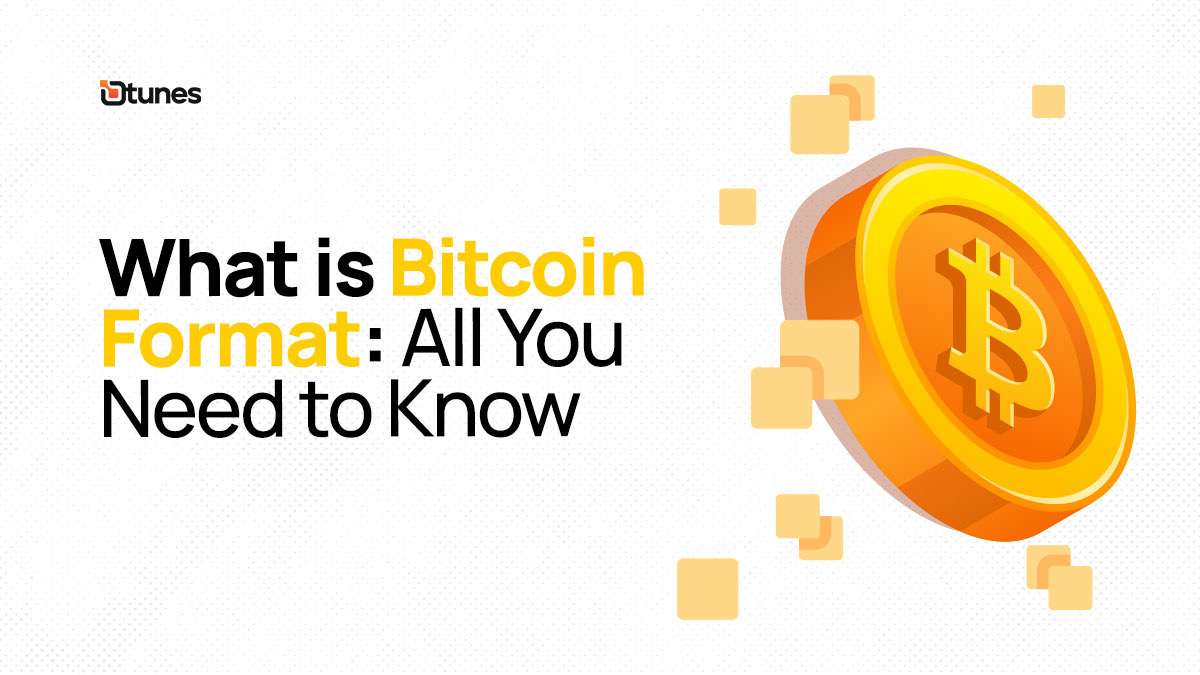
What is Bitcoin Format: All You Need to Know
Let’s answer the question “What is Bitcoin Format”. In the ever-evolving landscape of digital currencies, Bitcoin stands out as the pioneer and the most well-known cryptocurrency. As the adoption of Bitcoin continues to grow, various aspects of its functionality and structure become crucial to understand. One such aspect is the Bitcoin format. In this comprehensive guide, we will delve into what Bitcoin format entails, its significance, and how it influences the use and perception of the world’s first decentralized digital currency.
What is Bitcoin?

Before delving into the what Bitcoin format is, it’s essential to understand what Bitcoin is and why it has become a focal point of discussions in the financial realm. Bitcoin is a decentralized digital currency, often referred to as cryptocurrency, created in 2009 by an unknown person or group using the pseudonym Satoshi Nakamoto. Unlike traditional currencies issued by governments and central banks, Bitcoin operates on a peer-to-peer network based on blockchain technology.
The blockchain, a distributed ledger that records all transactions across a network of computers, ensures transparency, security, and immutability. Bitcoin transactions are verified by network nodes through cryptography, and the entire process is decentralized, eliminating the need for intermediaries like banks. This decentralized nature, coupled with a finite supply of 21 million coins, contributes to the scarcity and perceived value of Bitcoin.
Understanding Bitcoin Format
What is bitcoin format?
Bitcoin format refers to the specific structure and representation of data within the Bitcoin network. At its core, Bitcoin transactions consist of inputs and outputs, and the format dictates how these components are structured. The Bitcoin format is a set of rules and protocols that ensure consistency and interoperability across the entire network, allowing participants to send and receive funds seamlessly.
Key Components of Bitcoin Format
- Transaction Inputs:
- Bitcoin transactions often involve spending the funds from previous transactions. These spent funds are referred to as inputs. The format includes details about the source of these inputs, including the transaction ID and the output index.
- Transaction Outputs:
- The destination of the funds in a Bitcoin transaction is specified in the outputs. Each output includes the recipient’s address and the amount being sent. Understanding how outputs are formatted is crucial for verifying transactions and maintaining the integrity of the Bitcoin ledger.
- Scripts and Signatures:
- Bitcoin uses a scripting language for specifying the conditions under which funds can be spent. The format includes scripts that define the rules for unlocking the funds in a particular output. Additionally, digital signatures play a vital role in proving ownership of private keys, ensuring the security of transactions.
The Role of Bitcoin Addresses
Bitcoin addresses are a fundamental aspect of the Bitcoin format. These addresses serve as a representation of ownership and are derived from public keys. The format of a Bitcoin address is standardized to ensure compatibility across different wallets and services. This standardization enhances the usability of Bitcoin and simplifies the process of sending and receiving funds.
Significance of Bitcoin Format

Interoperability and Compatibility
The standardized format of Bitcoin transactions is crucial for ensuring interoperability and compatibility across the diverse ecosystem of wallets, exchanges, and other Bitcoin-related services. Regardless of the platform or service used, adherence to the established format allows participants to seamlessly transact with one another. This interoperability is a key factor in the widespread adoption of Bitcoin.
Security and Consistency
The Bitcoin format plays a pivotal role in maintaining the security and consistency of the entire network. By adhering to a standardized format, the risk of errors and inconsistencies is significantly reduced. Security protocols, such as digital signatures, rely on a consistent format to ensure the authenticity of transactions. Any deviation from the established format could indicate potential security risks.
Blockchain Integrity
The Bitcoin format is closely tied to the structure of the blockchain, the decentralized ledger that records all transactions. Each block in the blockchain contains a set of transactions, and these transactions must adhere to the prescribed format. This adherence to format ensures the integrity of the blockchain, as any attempt to manipulate the format would be detected by the network, maintaining the trustworthiness of the entire system.
Evolution of Bitcoin Format
Segregated Witness (SegWit)
In 2017, Bitcoin underwent a significant upgrade known as Segregated Witness, or SegWit. This upgrade aimed to address certain scalability issues and improve the efficiency of transaction processing. One of the key changes introduced by SegWit was the separation of transaction data and witness data, allowing for more data to be included in each block. This alteration to the Bitcoin format marked a milestone in the ongoing development of the protocol.
Bech32 Addresses
As part of the SegWit upgrade, a new address format known as Bech32 was introduced. Bech32 addresses offer several advantages over the traditional Base58 addresses, including a more efficient error-detection mechanism and improved support for future upgrades. The adoption of Bech32 addresses is an example of how the Bitcoin format can evolve to address both technical challenges and user experience considerations.
Practical Implications of Bitcoin Format

Wallet Compatibility
The format of Bitcoin transactions has implications for wallet compatibility. Wallets must be updated to support changes in the Bitcoin format, especially in the case of protocol upgrades like SegWit. Users need to ensure that their wallets are compatible with the latest Bitcoin format to take advantage of improved features and security enhancements.
Transaction Fees and Processing Times
Changes to the Bitcoin format, such as the implementation of SegWit, can impact transaction fees and processing times. SegWit transactions generally have lower fees compared to non-SegWit transactions, making them a more cost-effective option. Additionally, the increased efficiency in processing allows for quicker confirmation times, enhancing the overall user experience.
Future Developments and Challenges
Schnorr Signatures
One of the ongoing developments in the realm of Bitcoin format is the potential integration of Schnorr signatures. Schnorr signatures offer advantages over the current elliptic curve digital signature algorithm (ECDSA) used in Bitcoin, including improved efficiency and enhanced privacy. If adopted, Schnorr signatures could further optimize the size and structure of Bitcoin transactions.
Continued Standardization Efforts
As the Bitcoin ecosystem evolves, continued standardization efforts will be essential to ensure a uniform and secure user experience. The Bitcoin format will likely see further refinements and updates to address emerging challenges and accommodate new features. The collaboration among developers, wallet providers, and the broader community will play a crucial role in shaping the future of Bitcoin format standards.
Conclusion
In conclusion, understanding the intricacies of Bitcoin format is integral to navigating the world of cryptocurrencies, especially for users, developers, and businesses involved in the Bitcoin ecosystem. The format’s significance in ensuring interoperability, security, and consistency cannot be overstated. As Bitcoin continues to evolve, with ongoing developments and potential upgrades, staying informed about the nuances of Bitcoin format will be crucial for anyone looking to leverage the full potential of this groundbreaking digital currency.
Keep Reading: How do I Cashout My Bitcoin In Nigeria
Tobi brings stories to life as the Content Writer and Creator at Dtunes, blending creativity with strategy to connect with audiences. When she’s not crafting content, you’ll find her traveling, meeting new people, or trying out exciting things.






